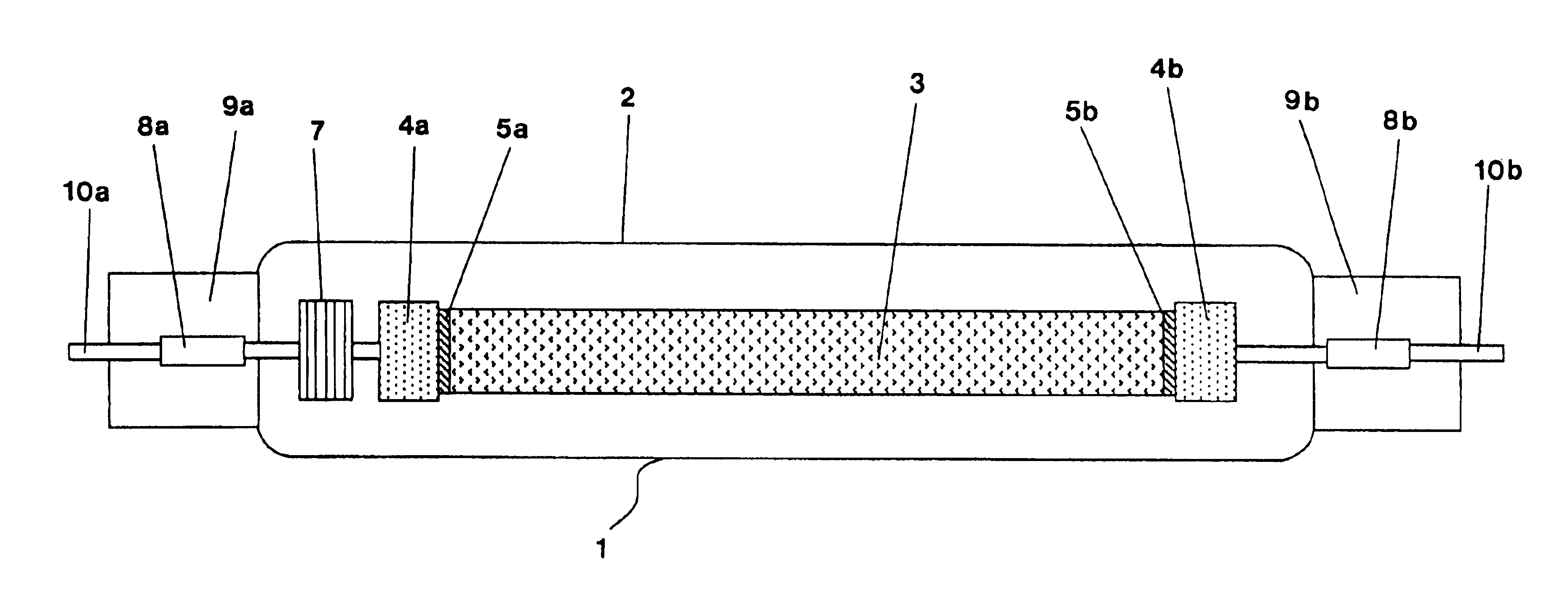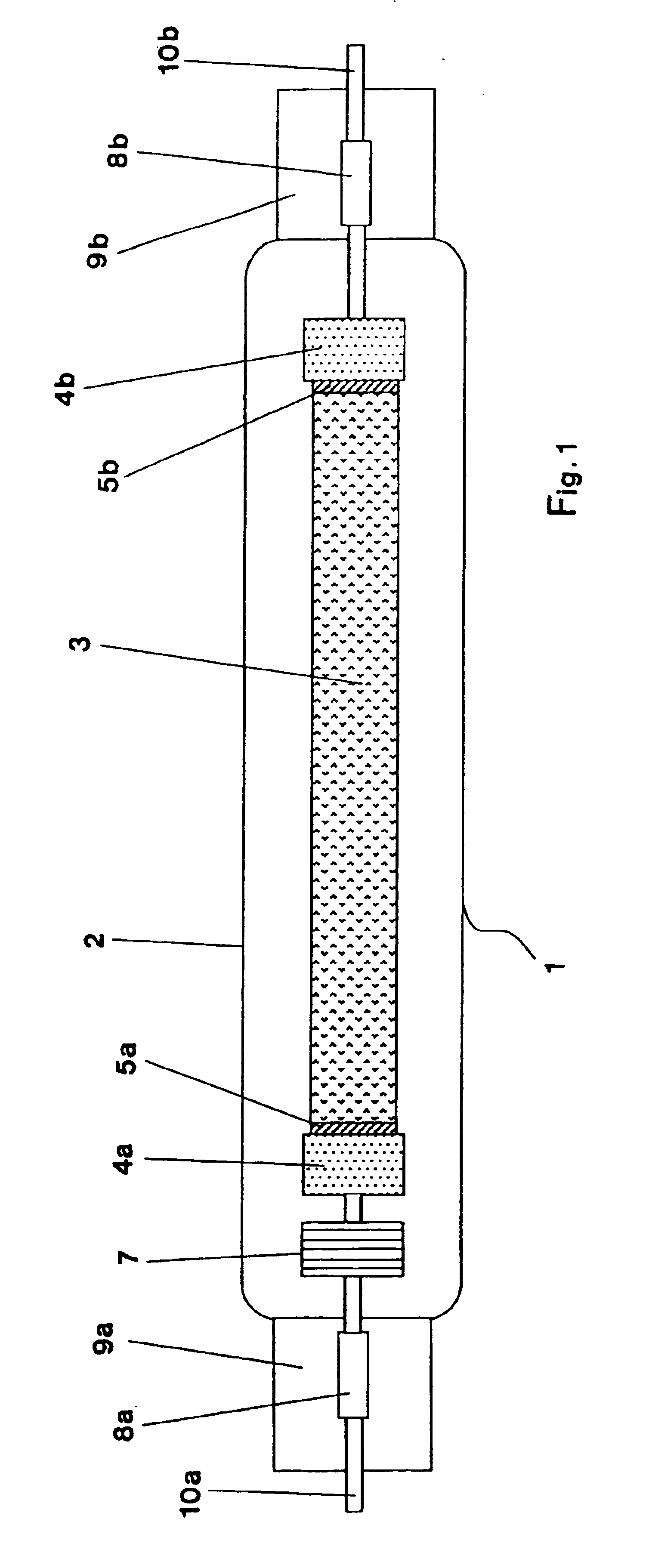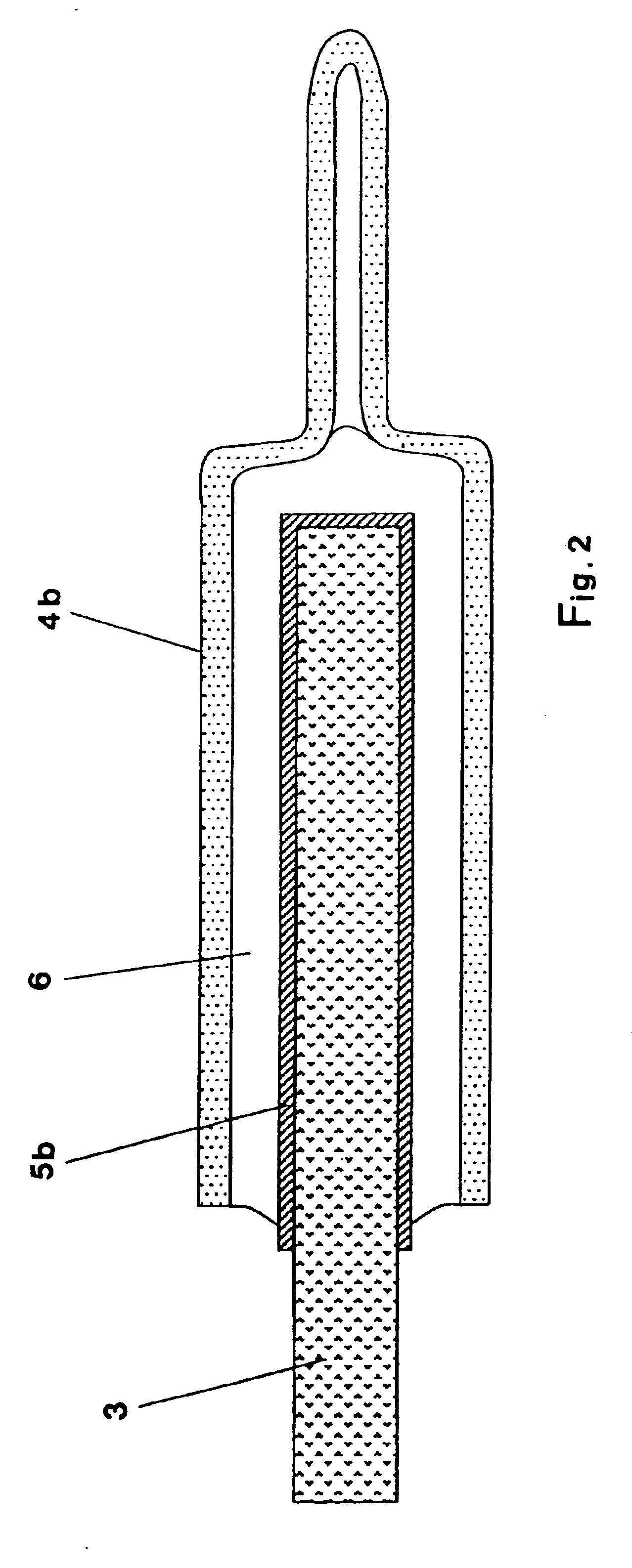Infrared radiation source
a radiation source and infrared technology, applied in the field of infrared radiation sources, can solve the problems of molybdenum carbide, markedly lower strength in comparison with molybdenum, formation of molybdenum carbide, etc., and achieve the effect of favorable bushings
- Summary
- Abstract
- Description
- Claims
- Application Information
AI Technical Summary
Benefits of technology
Problems solved by technology
Method used
Image
Examples
Embodiment Construction
[0026]FIG. 1 shows an infrared radiation source 1 with a radiation-transparent, gas-tight tube 2 made of silica glass. A heat conductor 3 made of carbon strip is arranged inside the tube 2 and has two ends which are respectively firmly connected electrically and mechanically to bushings 4a, 4b. The two ends of the heat conductor 3 here have respective coatings 5a, 5b made of noble metal and, as can be seen in FIG. 2, are soldered to the bushings 4a, 4b with a metallic solder 6. The bushing 4a is electrically connected to a current lead-through 8a, made of molybdenum foil, by a spring element 7 for compensation of thermally caused length changes of the heat conductor 3 in operation. The current lead-through 8a is here fused gas-tight into a pinched portion 9a of the tube 2 and electrically connected to an electrical connection 10a projecting from the tube 2. The bushing 4b is directly connected electrically with a current lead-through 8b made of molybdenum foil. The current lead-thro...
PUM
| Property | Measurement | Unit |
|---|---|---|
| gas pressure | aaaaa | aaaaa |
| gas pressure | aaaaa | aaaaa |
| temperatures | aaaaa | aaaaa |
Abstract
Description
Claims
Application Information
 Login to View More
Login to View More - R&D
- Intellectual Property
- Life Sciences
- Materials
- Tech Scout
- Unparalleled Data Quality
- Higher Quality Content
- 60% Fewer Hallucinations
Browse by: Latest US Patents, China's latest patents, Technical Efficacy Thesaurus, Application Domain, Technology Topic, Popular Technical Reports.
© 2025 PatSnap. All rights reserved.Legal|Privacy policy|Modern Slavery Act Transparency Statement|Sitemap|About US| Contact US: help@patsnap.com



